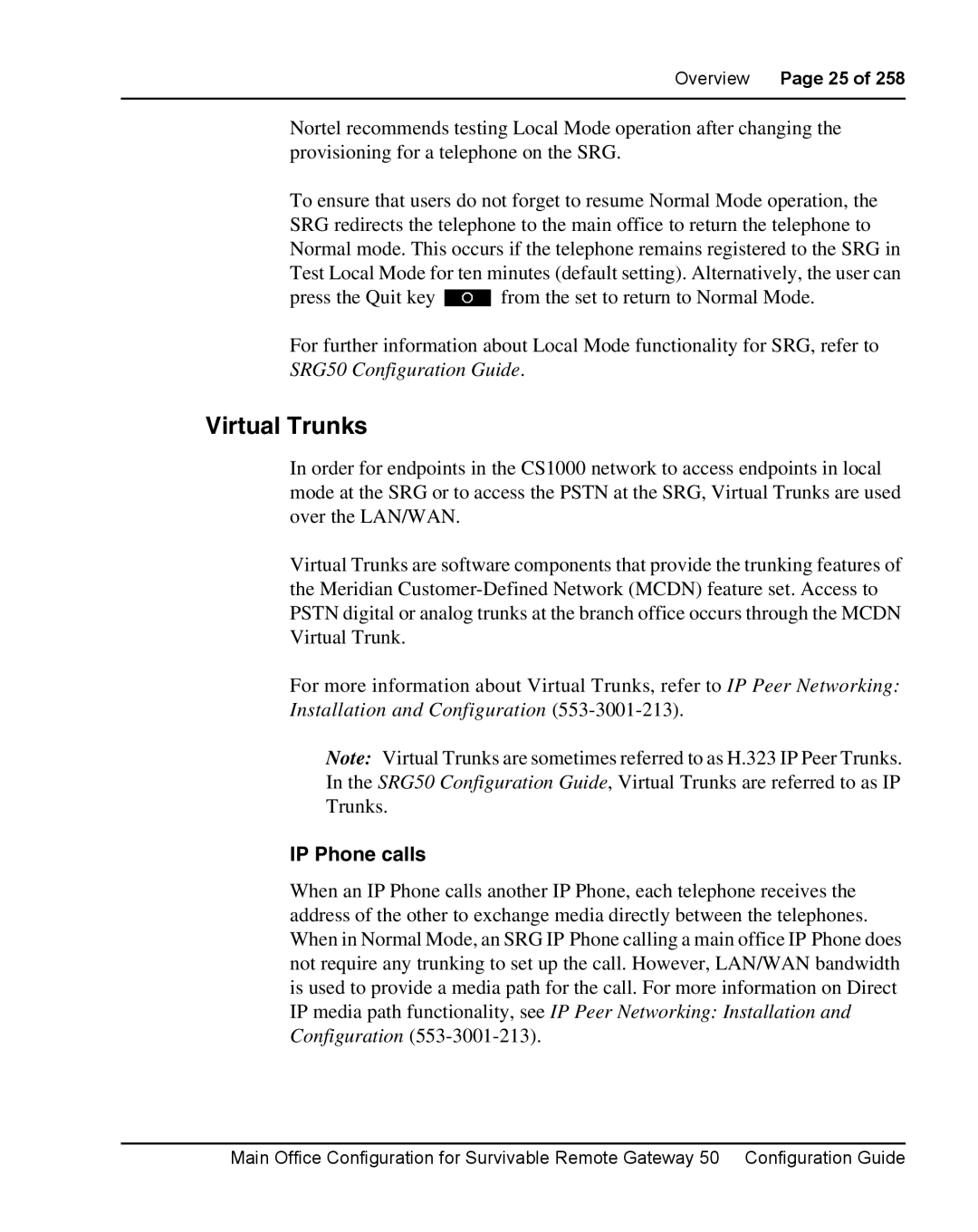
Overview Page 25 of 258
Nortel recommends testing Local Mode operation after changing the provisioning for a telephone on the SRG.
To ensure that users do not forget to resume Normal Mode operation, the SRG redirects the telephone to the main office to return the telephone to Normal mode. This occurs if the telephone remains registered to the SRG in Test Local Mode for ten minutes (default setting). Alternatively, the user can press the Quit key Xfrom the set to return to Normal Mode.
For further information about Local Mode functionality for SRG, refer to SRG50 Configuration Guide.
Virtual Trunks
In order for endpoints in the CS1000 network to access endpoints in local mode at the SRG or to access the PSTN at the SRG, Virtual Trunks are used over the LAN/WAN.
Virtual Trunks are software components that provide the trunking features of the Meridian
For more information about Virtual Trunks, refer to IP Peer Networking: Installation and Configuration
Note: Virtual Trunks are sometimes referred to as H.323 IP Peer Trunks. In the SRG50 Configuration Guide, Virtual Trunks are referred to as IP Trunks.
IP Phone calls
When an IP Phone calls another IP Phone, each telephone receives the address of the other to exchange media directly between the telephones. When in Normal Mode, an SRG IP Phone calling a main office IP Phone does not require any trunking to set up the call. However, LAN/WAN bandwidth is used to provide a media path for the call. For more information on Direct IP media path functionality, see IP Peer Networking: Installation and Configuration
Main Office Configuration for Survivable Remote Gateway 50 Configuration Guide
